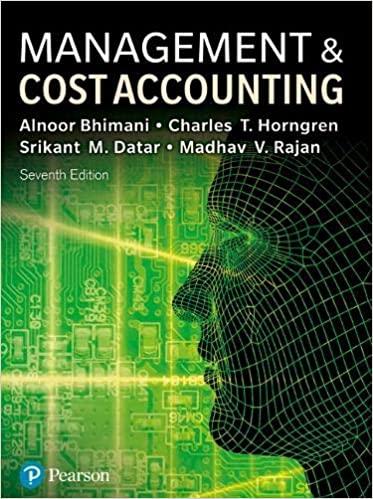Question
Cummings Corp. has three business segmentsthe Plumbing Parts division, Small Tools division, and Design Printing division. Carol Jenkins (Cummings' CFO) and William Samuels (head of
Cummings Corp. has three business segmentsthe Plumbing Parts division, Small Tools division, and Design Printing division. Carol Jenkins (Cummings' CFO) and William Samuels (head of Production) would like to analyze the performance of each division using financial and nonfinancial measures. Using the information contained in the exhibits, complete the sections below. The information in the Analytics Definitions exhibit must be used for all financial ratio calculations.
PART I: For the Plumbing Parts division, calculate the partial productivity ratio (PPR) for iron material used and the total factor productivity (TFP) ratio for all raw materials used to produce the division's plumbing pipes and elbows during August. Insert answers in table below.
| A | B | |
|---|---|---|
| 1 | Partial productivity ratio (for iron) | |
| 2 | Total factor productivity ratio (for all raw materials) |
PART II: For the Small Tools division, determine the dollar or percentage variance for each financial scorecard category, inserting the variance as a positive amount in the table below. Also, indicate whether each SBU (revenue, cost, profit, investment) underperformed or overperformed on the head of Production's financial scorecard, based on the results of the variance analysis.
| A | B | C | D | |
|---|---|---|---|---|
| 1 | Financial Scorecard Category | Variance ($ or % as Applicable) | SBU | Overperformed or Underperformed? |
| 2 | Total revenue | Revenue SBU | ||
| 3 | Total costs | Cost SBU | ||
| 4 | Net income | Profit SBU | ||
| 5 | Return on assets | Investment SBU |
PART III: For the Design Printing division, calculate the economic value added of the new investment and insert the correct answer in the table provided below.
Economic value added |
Here are the price and usage results from August for our Plumbing Parts division:
| Price of iron purchased | $6.10/lb. |
| Price of copper purchased | $9.60/lb. |
| Number of pipes/elbows produced | 12,000 units |
| Pounds of copper used | 750 lbs. |
| Pounds of iron used | 4,800 lbs. |
As you know, our division manufactures specialized pipes and elbows primarily for industrial/institutional facilities. The raw materials used for these related products are iron and copper, with iron the primary production input. Over the last few months, we have negotiated price reductions from our suppliers and expect per-pound prices for iron and copper to fall by 10 cents and 15 cents, respectively. These price reductions should begin to take effect next month.
At the beginning of the fiscal year, they purchased a state-of-the art printing machine. Information regarding this purchase and other financial data for the 12 months ending on August 31 of the current year: Cost of printing machine $850,000 Cost of capital 9 percent Net operating profit after taxes $125,000 Net income $100,000 Per Kelly, they are also considering several other capital equipment purchases that will likely occur in October or November. The expected cost for these total approximately $1.2 million.
| Small Tools Division | |||
| (Dollars in thousands) | |||
| Actual 3 Months Ended 8/31 | Budget 3 Months Ended 8/31 | ||
| Revenue | |||
| Consumer sales | $ 34,785 | $ 33,000 | |
| Industrial sales | 99,663 | 102,250 | |
| Production costs | |||
| Raw materials | 32,268 | 31,108 | |
| Direct labor | 64,224 | 66,949 | |
| Manufacturing overhead | 12,900 | 13,500 | |
| Scrap (unsold) | 500 | - | |
| Other costs | |||
| Management salaries | 2,500 | 2,500 | |
| Promotional | 300 | 426 | |
| Net income | 21,756 | 20,767 | |
| Assets | 198,975 | 188,400 |
Step by Step Solution
There are 3 Steps involved in it
Step: 1

Get Instant Access to Expert-Tailored Solutions
See step-by-step solutions with expert insights and AI powered tools for academic success
Step: 2

Step: 3

Ace Your Homework with AI
Get the answers you need in no time with our AI-driven, step-by-step assistance
Get Started


